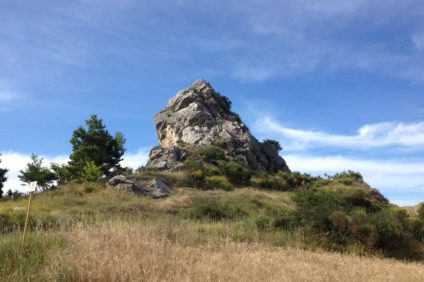The Altare della Patria, in Rome, is an imposing historical monument that symbolizes thenational identity. It stands majestically in Piazza Venezia and is also known as the Vittoriano or monument to the "Father of the Fatherland". The reason is simple: the name comes from Vittorio Emanuele II, first king of Italy. In 1878, after his death, the Italian Parliament decided to have a monument built to celebrate him. To erect it there were expropriations and demolitions of entire medieval and Renaissance districts that stood in the immediate vicinity. Not only. It took about 25 years of work.

The equestrian statue of Vittorio Emanuele II
The Altare della Patria stands on the Capitol Hill, a legendary place of the eternal city. It is the first hill on which, according to legend, Rome was founded and the temple to Capitoline Jupiter was erected. The son of Vittorio Emanuele II, Umberto I of Savoy, lays the first stone there in 1885. Twenty-six years later, on 4 June 1911, the monument was inaugurated by Vittorio Emanuele III, on the occasion of the celebration of the fifty years of Unification of Italy. That same day, the imposing equestrian statue of Vittorio Emanuele II of Savoy was added to the Altare della Patria, in gilded bronze, the work of Enrico Chiaradia. Its base contains marble statues of the 14 noble cities of Italy, all represented with their own symbolism. Above, in correspondence with the columns, there are allegories of the sixteen regions of the time.

The architects
The Altare della Patria is the result of the project of the architect from the Marches John Sacconi, winner of the international competition held in 1882. Before this, another one had been carried out in 1880. The work for the construction of the monument began in 1885, but proceeded slowly and the project was modified several times during construction . The same thing happens with the material used: the travertine is replaced by the very white Botticino from Brescia. Over the years, other architects followed one another in Sacconi: Gaetano Koch, Manfredo Manfredi and Pio Piacentini.
The Tomb of the Unknown Soldier
The Altare della Patria preserves the body of the Unknown Soldier, buried on November 4, 1921, in memory of the numerous soldiers who died in the First World War, whose name or place of burial is unknown. The tomb is located in the center of the monumental complex, under the statue of the goddess Rome, in the crypt designed by Armando Brarsini. Every year, on the occasion of the 2nd June, the date on which the national day of the Republic is celebrated, the head of state places a laurel wreath there.
Structure
The entire monumental complex is 81 meters high and 135 meters wide. The numerous sculptures it is enriched with all have a symbolic value. Its structure is built according to an ascending path, and by means of terraces and stairways it rises to the lateral temples up to the imposing portico. This is neoclassical in style with a Corinthian colonnade whose interior forms the terrace and is decorated with marble and mosaics of Giulio Bargellini. It is surmounted by bronze chariots, which are an allegory of the Unity of the Fatherland and of Liberty. Two fountains represent the Adriatic coast and the Tyrrhenian coast. Above, on the two propylaea, the writings dominate "Patriae united" ("To the unity of the fatherland") e "Civium Libertati" ("To the freedom of citizens").

At his feet, Rome
Inside the monument are the flags shrine, the Risorgimento museum, the Italian emigration museum and the Vittoriano complex, which is one of the most important spaces for temporary exhibitions in Rome. From the terrace it is possible to enjoy a breathtaking view of the historic center of the Eternal City, which allows you to appreciate its extraordinary beauty, known all over the world.





